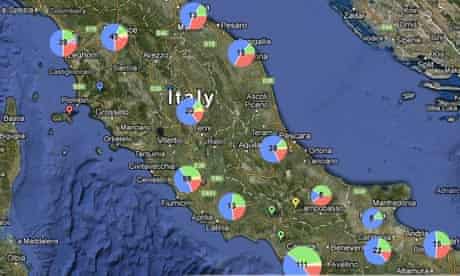
The death sentence comes in many shapes and sizes. In too many countries, capital punishment is a State function. In Europe, France was the first country to abolish capital punishment. In 1994, Italy became only the second `abolitionist’ nation-State in Europe. But that doesn’t mean Italy doesn’t execute its prisoners.
Italian prisons are notoriously overcrowded, and the life inside is famously harsh. A 2008 Council of Europe report found the prisons “severely overcrowded”: “For prisoners, an overcrowded prison often entails cramped and unhygienic accommodation, a constant lack of privacy, reduced opportunities in terms of employment, education and other out-of-cell activities, overburdened health-care services, and increased tension – and hence more violence – between prisoners and between prisoners and staff. In addition, due to lack of adequate living space, a number of prisoners were transferred to prisons far away from their families.”
Who are the prisoners? Undocumented immigrants, drug users, remand prisoners figure prominently. Italy has one of the worst records on alternative sentencing. In Italy, you do the time, even when you’re awaiting judgment as to whether or not you’ve committed the crime.
The prisons are not just overcrowded. They are severely, even criminally, overcrowded. In January of this year, in the case of Torreggiani and Others v. Italy, the European Court of Human Rights held, unanimously “that there had been: A violation of Article 3 (prohibition of torture and inhuman or degrading treatment) of the European Convention on Human Rights. The Court’s judgment is a “pilot judgment” concerning the issue of overcrowding in Italian prisons. This structural problem has now been acknowledged at national level. The Court called on the authorities to put in place, within one year, a remedy or combination of remedies providing redress in respect of violations of the Convention resulting from overcrowding in prison.”
The prisons are not just severely and criminally overcrowded. They are fatally, toxically overcrowded. From January 2002 up to May 2012, 915 prisoners died in Italian prisons. Of that group, a whopping 518 committed suicide. That’s 56% “killed themselves.” That’s astronomical, by any standards, whether compared to the rate of the Italian general population or to other national prison populations. [The 56% suicide rate does not include death by drug overdose (26) or death “under unclear circumstances” (177). If half of those two groups, put together, actually committed suicide, then the suicide rate becomes 61%.]
Imagine a place in which, basically, 6 out of every 10 persons commits suicide. That place is the prison system of Italy. In individual prisons, the situation is actually more lethal. A map of the prison deaths reveals a great deal: “Many stories can be found by viewing the map. Most of them did not find coverage in the mainstream media. For instance, almost nobody was fully aware about the almost forty deaths of those detained in mental hospitals; or about prisoners who took a drug overdose behind bars. Some stories clash with our perceived stereotypes: nobody normally imagines that those who die in jail may be women, such as Manuela Contu and Franca Fiorini, 42-year and 37-year respectively, died of overdose in Civitavecchia in 2003. Or like Francesca Caponnetto, deceased in Messina in 2004, aged 40. Other prisoners died very young, such as a 17-year old boy, who committed suicide in Firenze, in 2009. No one knows about 50 young prisoners who died aged under 20.”
No one knows. Historically, in Italy, as elsewhere, when it comes to women in prison, the story has always been no one knows, from the first days of the independent so-called liberal nation-State to today. At the outset, women prisoners were relegated to obscure and never-discussed prisons run by nuns. No one knew. And today, when it comes to women prisoners, and especially the recently criminalized immigrant women prisoners, nobody normally imagines.
In Italy today, there is no `life inside’. Prison is a death sentence, administered through a policy of mass and collective suicide. And no one knows?
(Image Credit: The Guardian)